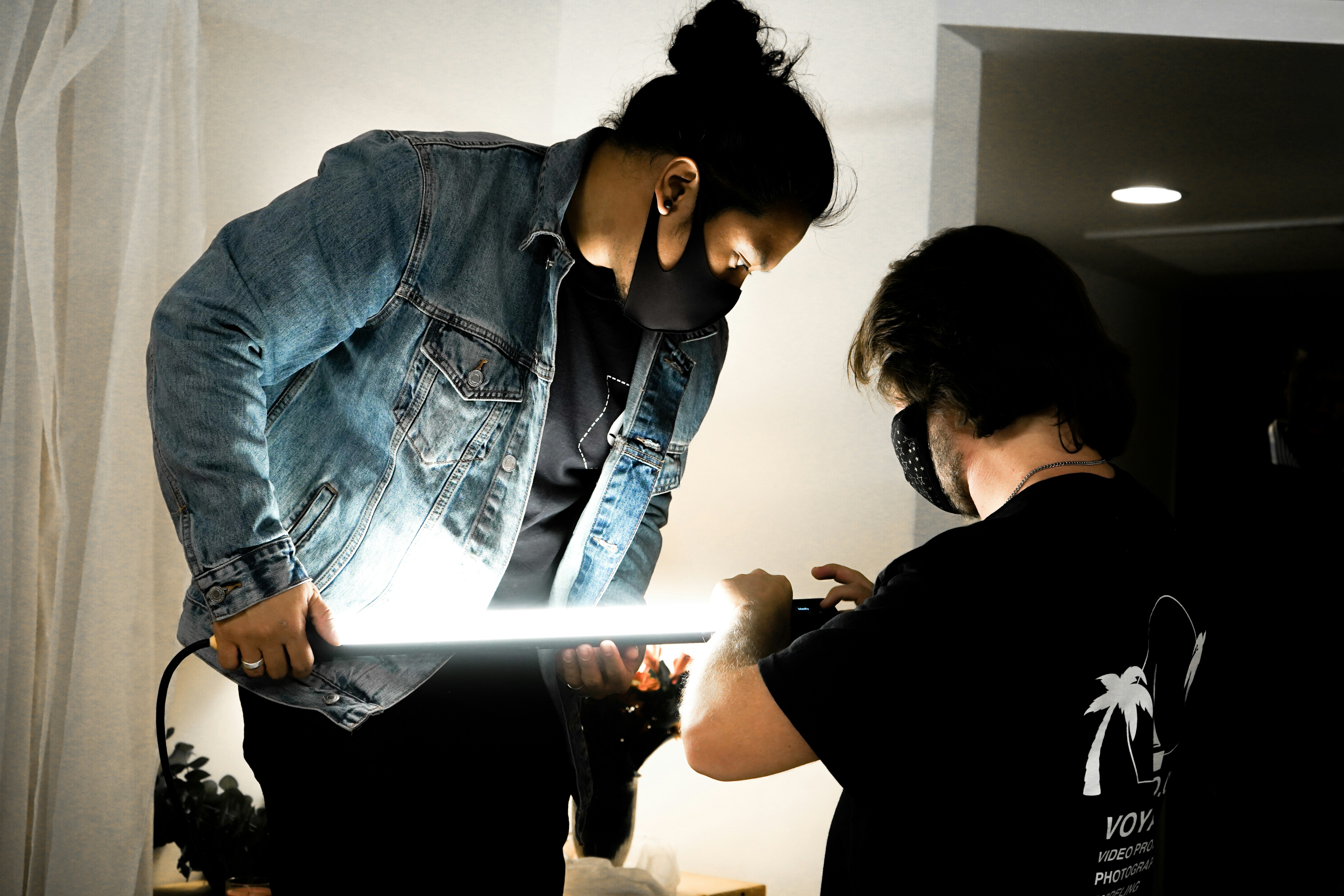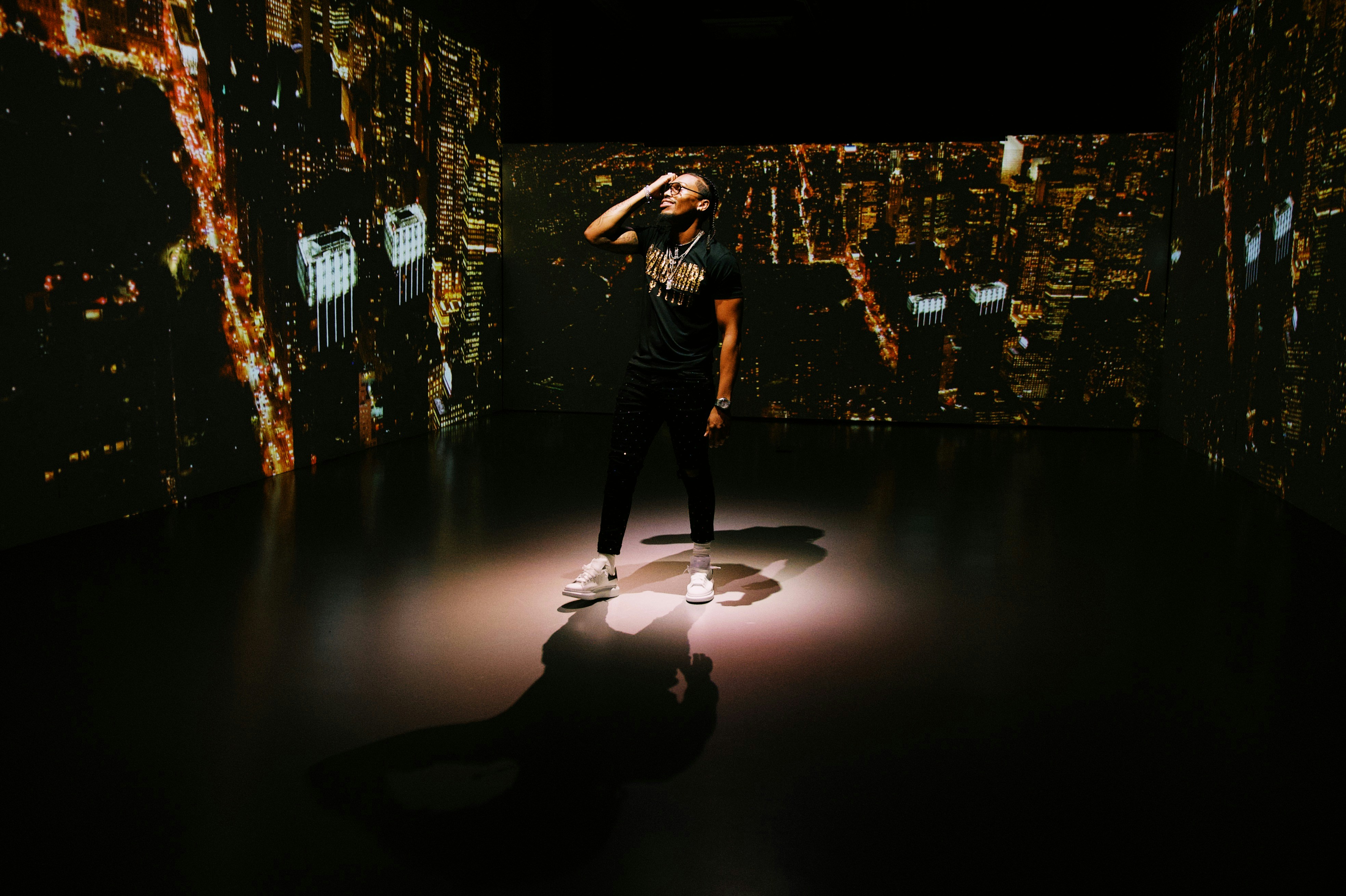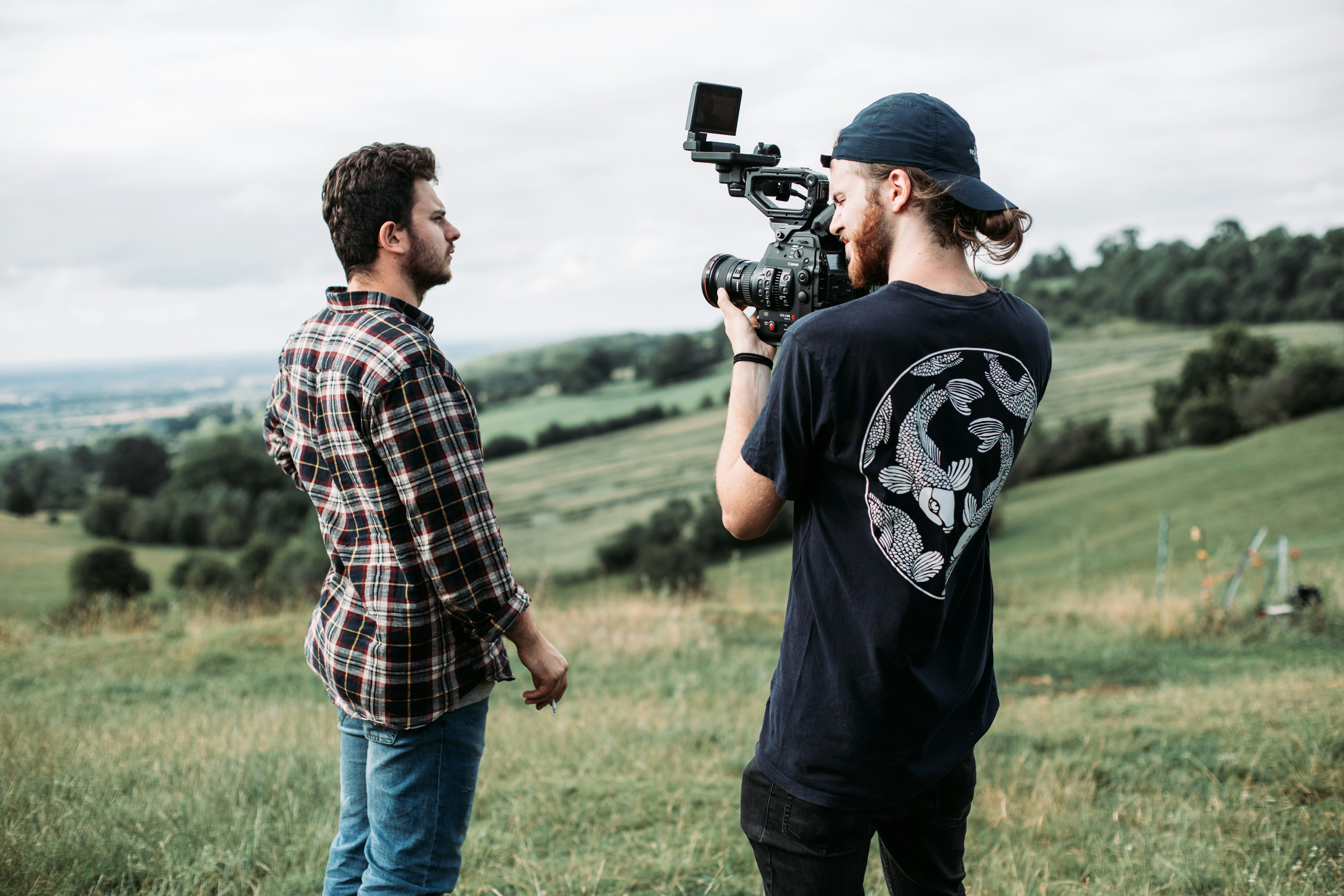9 Effective Lighting Setups for Different Scenes
by WriteSeen
Achieving the perfect lighting setup for different scenes can transform a project from average to extraordinary. For creators aiming to master moods and atmospheres, knowing which lighting techniques suit each scene type is crucial.
Whether cultivating drama, excitement, or authenticity, we’ll explore impactful lighting strategies that enrich your visual storytelling across photography, film, and theater. Discover which setups amplify emotions and ensure your creative vision captivates your audience.
1. Moody and Dramatic Scenes
Let's start with lighting setups that are perfect for creating mood and drama. This style draws the viewer into the emotional depth of a scene, where shadows and light dance to create tension and excitement. It's ideal for filmmakers and photographers alike who want to touch the soul of their audience through visual storytelling.
Chiaroscuro and Low-Key Lighting
Create striking contrasts with low-key lighting, where shadows dominate and highlights pick out the details you want to showcase. This isn’t just about underlighting your subject; it’s about thoughtful placement. Position your lights to achieve dramatic shadows.
- Use directional light to focus on key features, letting shadows carve out the rest.
- Side lighting brings out textures and adds depth. It emphasizes the subject by separating it from the background.
- Gobos come in handy for casting patterned shadows to make scenes memorable.
Tools and Techniques
Mix natural with artificial light sources. This layered approach brings complexity and authenticity to your scenes. The tools of choice here?
- Barn doors on spotlights help direct light precisely.
- Use snoots to narrow light beams for isolated highlights.
Creating Tension
Backlighting adds an element of mystery. Silhouettes suggest more than they show, building tension through obscurity.
Light and shadow are your paintbrushes for evoking emotion—a subtle touch that sets the narrative tone.
2. Bright and Cheerful Scenes
Switching from mystery to merriment, let’s illuminate scenes that feel vibrant and full of life. This style suits commercials, lifestyle photography, and daytime shooting where energy and positivity light up the frame. Think about settings that need a warm, inviting atmosphere to draw viewers in, making them feel right at home or uplifted.
Soft and Even Lighting
Bright scenes thrive on diffused, soft lighting that reduces harsh contrasts. Use tools that spread light evenly to make everything look naturally vibrant and accessible.
- Soft boxes and reflectors are your best friends here; they ensure that light doesn’t create unwanted shadows.
- Look to top lighting mimicking afternoon sun, bright, gentle, and natural.
Balance and Warmth
Balancing artificial lighting with natural sources gives scenes a realistic look without sacrificing vibrancy. This delicate mix helps maintain a true-to-life atmosphere that resonates with the viewer emotionally.
- Colored gels add a tinge of warmth to cooler artificial lights, promoting a comfortable ambiance.
- Wide sources of light, like LED panels, help cover larger areas evenly without creating harsh spots.
Creating Energy
Direct warm light angles for a cozy glow. Family scenes, festive moments, or any setting benefiting from a bit of warmth gain their charm through strategic light positioning.
Bright lighting lifts spirits and sets a scene's tone with a welcoming vibe, pushing narrative arcs toward joyous heights.

3. Romantic and Intimate Scenes
Romantic scenes revolve around closeness and warmth, capturing tender moments that resonate with viewers who cherish nuanced storytelling. In these setups, light is your brush, painting with hues of warmth and intimacy, perfect for romantic films, intimate photography, and scenes that focus on personal interactions.
Cozy Ambience with Soft Lighting
Encourage emotions through soft focal lighting enhanced by candlelight or fairy lights. These warm sources enrich skin tones and set a gentle, flattering background.
- Pink or orange gels enhance natural skin tones, adding a flattering glow.
- Variable light sources seamlessly shift a scene from warmth to cooler hues if narrative elements demand it.
Practical Lights
Strategically placed practical lights—lamps, wall lights—establish authentic ambiance, bridging what's real and what's storytelling.
- Layer your light sources to create depth—stacked lighting approaches make spaces feel rich and engaging.
- Diffusers make candlelight and fairy lights shimmer without harsh glares.
Dreamlike Visuals
Soft-focus filters give your shots a dreamier, gentle quality. While complex, these scenes can be straightforward to manage with well-placed light sources.
Capturing the light of affection means wrapping your subject in warmth while allowing subtle shadows to accentuate sincere emotions.
4. Sci-Fi and Futuristic Scenes
In the realm of sci-fi and the futuristic, lighting becomes a bit of a spectacle. These setups cater to imaginative storytelling, showcasing the potential of technology and envisioning futures with a pop of color and inventive shadow work. Here, light becomes more than illustration–it’s an integral part of the narrative.
Colors and Angles
LED strips and neon lights give off an otherworldly feel. Sci-fi thrives on stark contrasts and unique color palettes.
- Blues and greens are default colors, creating a high-tech appearance.
- Sharp angles translate light into geometric patterns, adding a visual punch.
Enhancing the High-Tech Look
Smart systems that change hues in real-time capture attention with dynamism. A futuristic feel comes from a continuously evolving light environment.
- Utilize programmable LED panels for dynamic shifts; scenes come alive with movement and change.
- Reflective surfaces multiply light reflections, exaggerating the futuristic aesthetic.
Atmospheric Elements
Film isn't just visual; it's atmospheric. Haze machines pair with strategic lighting to capture distinct beams, making light part of the scene's entity. It offers depth and makes each beam glow with significance.
The future is bright, bold, and boundary-pushing. Embrace it with lights that tell a story through more than just illumination.
5. Night Scenes with Realism
Finally, let’s focus on capturing the essence of the night without sacrificing clarity or impact. This lighting style excels in realism while maintaining the nighttime mystique that makes for compelling storytelling. It's especially useful for filmmakers looking to recreate those quiet, complex evening tones.
Balancing Natural and Artificial
Day-for-night can work, but mixing real nighttime shots with artful artificial light can deliver authenticity.
- Low-watt bulbs closely mimic the real low-light feel you find after dusk.
- Long exposures coupled with low-light settings capture ambient street lights and stars. Emphasize natural night elements by leaving some areas in near darkness.
Managing Shadows and Light
Allow shadows to deepen the narrative's mood, letting the viewer fill in gaps with imagination—essential for mystery and thrillers.
- Bounce cards help tweak ambient light, making sure certain elements don’t disappear completely.
- Varying light sources imitate distant street lamps, granting depth and rich background storytelling.
Color Temperature
Cooler temperatures simulate the moon's light, lending authenticity to scenes without over-lightening them. This subtlety is key to retaining the genuine feel of night.
Capturing the quiet intensity of the night means utilizing light to highlight subtlety, allowing your scene to breathe with realism and atmosphere.
Night scenes demand precision and an intuitive understanding of light's narrative power, striving for an authenticity that keeps viewers engaged without losing clarity.

6. Action and Fast-paced Scenes
Thrill-seekers and adrenaline fans, this one’s for you. Crafting scenes that evoke excitement demands precision and energy. Lights play a critical role in matching the urgency of these cinematic explosions or high-speed chases. How can you ensure your audience feels the intensity you’re creating? Here’s how:
Quick Changes and Dynamic Lighting
Fast-paced scenes depend on swift lighting adjustments that parallel the on-screen action. Rapid movements need lighting that knows how to keep up without missing a beat.
- Sync light shifts with camera movements: Seamless transitions should reflect the energy of changing frames. Lighting transitions shouldn't lag behind your story.
- Hard lighting for sharp transitions: Hard lights create distinct shadows and highlights, enhancing the scene's energy.
- Light bursts for climax points: These add emphasis at critical moments—perfect for that final showdown or victory scene. Use bursts to punctuate emotional peaks.
Freeze Frame: High Speed with Pinpoint Precision
Capturing motion without blur is an essential skill. High-speed flashes help with this, making fast-paced scenes more vivid without sacrificing quality.
- Use high-speed flash: It freezes actions and guarantees that crucial kinetic moments are captured crisply.
- Light layering: Different layers provide depth, adding dimension and context beyond just pure motion.
Let's add that adrenaline jolt to your creative toolbox. At WriteSeen, you can collaborate with fellow creators to finesse these intricate setups—on a platform designed for your success.
7. Horror and Suspenseful Scenes
Grabbing your audience's attention by creeping them out or having them on the edge of their seats? That’s an art form. Horror and suspense hinge largely on the mastery of shadow and light. It's about creating an ambiance that echoes the looming dread your characters feel.
Shadows and Eerie Angles
Nothing speaks horror like well-placed shadows and unnatural illumination. Use these tactics to set your scene:
- Backlighting for unsettling silhouettes: Silhouettes ramp up tension and keep viewers guessing.
- Cold color palettes: Cool hues and muted tones can enhance the unsettling vibe of a scene.
- Use of flickering effects: Projection of the unknown—flickering lights create a sense of instability and unease.
Embrace Odd Angles
Dramatic shadows paired with odd angles can disorient your audience, adding unpredictability.
- Up-lighting for menacing atmosphere: When used in combination with odd camera angles, it can create a maze of shadows that confound and intrigue.
Mastery of horror lighting can make or break a scene. Working with peers on WriteSeen allows you to experiment with these techniques—creating suspenseful storytelling is a collaborative process.
8. Documentary and Natural Scenes
Realism is at the core of documentaries and natural settings, where authenticity is king. Here, light isn't manipulated excessively but allowed to tell its own stories. Let's look at how to achieve that authentic feel without losing the narrative's impact.
Natural Light Kingpins
Natural lighting gives an honest truth to your footage or photography. The art lies in enhancing those genuine moments without interference.
- Golden hour magic: Soft, diffused sunlight near sunrise or sunset adds a natural glow without artificial means.
- Diffusers for interview settings: Soften sunlight to maintain a real yet clutter-free look.
- Balance with reflectors: Manage shadows gently, ensuring they don’t eradicate key elements of the scene.
Weather as a Story Element
The unpredictability of nature is an ally, offering layers to your scenes through lighting changes.
- Dynamic daylight usage: Capturing varying lights throughout a day or in changing weather adds depth and storytelling elements without forced interference.
Documentary and natural scene creators on WriteSeen can leverage the platform to secure their creative processes and work with peers worldwide to celebrate authentic storytelling.

9. Interview and Talking Head Scenes
Interview and talking-head scenes require more than just focusing on the subject—they necessitate both clarity and warmth. To keep things confident and engaging, mastering the intricacies of controlled lighting helps keep the spotlight on your subject.
Three-point Lighting: The Gold Standard
What’s the key to framing your subject with professional flair? A solid three-point lighting setup that ensures even coverage without harshness.
-
Softbox key lights enhance faces: Reduce wrinkles and add a glow without masking features. Balance light for an authentic look.
-
Hair lights add depth: A dedicated hair light separates your subject from the background, adding depth and a professional finish.
-
Fill lights eliminate shadows: Proper use ensures even coverage, minimizing unwanted shadows and softening overall results.
Background Balance
Don’t forget about what’s behind your subject. It plays a huge part in establishing mood and professionalism.
- Ring lights for consistent illumination: Familiar tools in the world of solo interviews, ring lights deliver soft, consistent illumination that flatters any face.
WriteSeen’s creative ecosystem can support your journey in perfecting these techniques. Connect with fellow creators, gain invaluable feedback, and streamline your interview lighting setups.
Conclusion: Enhance Your Scene Lighting
Elevate your creative projects by understanding and manipulating light to fit the mood, emotion, and message of your scenes. Whether for action, drama, horror, or documentary, this guide encourages you to explore and enhance your lighting skills. Establish your vision, engage your audience, and experiment boldly within your creative network.